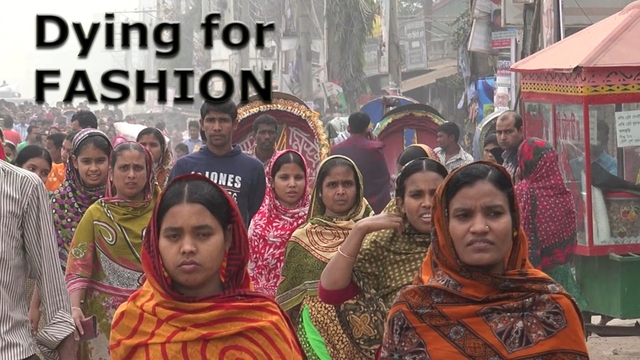The Producers

Inge Altemeier was born in 1956 and grew up in Hamburg. She completed her studies at the University of Hamburg in English, Political Science and Pedagogics. After working as a freelancer for radio and television, she undertook further studies at the Academy for Journalism. Since 1991, she has worked as a freelance journalist, director and author for NDR, Der Spiegel, ARD, ZDF and Arte. Inge specialises in global investigative journalism and has won several media awards. She is fluent in English, Indonesian and German.

Reinhard Hornung was born in 1957 and grown up in Hamburg. He completed his studies at the University of Economics and Politics with the emphasis sociology and new media. After training in several film production companies he now works as a cameraman, editor, producer and film-maker for public television in Germany.
Making The Film

This film is dedicated to Koshed Alam, a hero of the exploited textile workers in Bangladesh. For years we had been working together, publishing the story on deathly denim, toxic leather and working conditions in the textile industry in Bangladesh. When Koshed died in 2012, he took with him the unity of the movement in Bangladesh. For us it was clear we had to continue, since we had worked on this issue for more than 20 years, and we wanted to show that there is a solution. After the Rana Plaza incidents, many TV teams flocked into the country and the garment industry was well prepared for undercover investigators. Some labour activists received death threats so it was very difficult to find out the truth.
The shooting conditions in Turkey were even worse. The majority of the sandblasters lived in the Kurdish villages near the Syrian borders. We decided to go there, even though our friends told us that the situation was tense. It was a beautiful morning, in a peaceful landscape. We reached the village where 300 victims were living and started our work. Things went smoothly, then we decided to go to the graveyard. On the way a group of bearded men stopped us. I tried to introduce myself, but one of them spat at me, saying that Western journalists are guilty for the terror because we do not respect Muslim culture. Luckily we had been hiding our camera and left the village as quickly as possible, before the shooting started. We were safe, and thanks to the brave people who made it possible, the footage of the victims could be published.
When we reached Istanbul, we discovered that the man who spat on me was an ISIS supporter. Two hours after we left, he was shot. Since then, civil war has continued and from time to time I hear that another sand blaster has died. The survivors who made it to Istanbul are still in court, but none of the big international jeans companies will take responsibility for their fate.
 The collapse of the Rana Plaza factory building in April 2013 killed 1,127 people, injured 2,000 and exposed the western world to the diabolical working conditions in Indian clothing factories. Labels were quick to distance themselves from the tragedy. Following the events, a team of lawyers at French NGO Sherpa, supporters of victims of economic crime, are working to expose the continuing hypocrisy of major high street brands and see that they're held liable for violations against international standards.
The collapse of the Rana Plaza factory building in April 2013 killed 1,127 people, injured 2,000 and exposed the western world to the diabolical working conditions in Indian clothing factories. Labels were quick to distance themselves from the tragedy. Following the events, a team of lawyers at French NGO Sherpa, supporters of victims of economic crime, are working to expose the continuing hypocrisy of major high street brands and see that they're held liable for violations against international standards.







